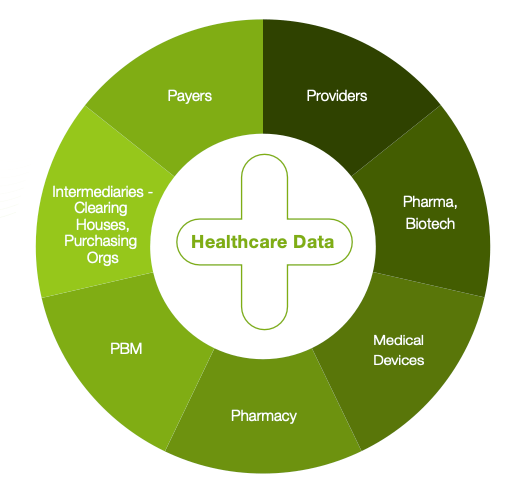Enabling Patient 360 with Snowflake & Modern Data Stack
Introduction
Patient 360 is a cutting-edge approach to healthcare, focused on aggregating integrating, and analyzing diverse patient data to
create a comprehensive and holistic understanding of an individual’s health. This innovative method aims to deliver a unified view of a patient’s health journey by combining medical records, test results, treatment plans, medication history, lifestyle factors, and patient-reported information. By providing healthcare providers with a complete and up-to-date picture of a patient’s health, Patient 360 enables providers to engage in more informed decision-making, provide personalized treatment plans, and improve their overall quality of care. This data-driven, 360 approach addresses the challenges posed by fragmented and siloed patient data, empowering healthcare professionals to deliver patient-centric care and achieve better health outcomes
Key Challenges
Data Fragmentation
Patient data is often scattered across multiple systems, such as electronic medical records (EMRs), lab databases, imaging systems, and specialty software. This fragmentation makes it difficult for healthcare providers to access a complete and holistic view of a patient’s health information.
Lack of Interoperability
Patient 360 Case Study Final New
Healthcare software is notorious for having poor integration. The excessive friction between multiple systems leaves patients frustrated with the quality of care, and causes significant operational inefficiencies for the provider.
Privacy and Security Concerns
Ensuring the protection of sensitive patient data and adhering to privacy regulations, such as HIPAA, adds complexity to the process of creating a unified view of patient health information.
Data Quality and Completeness
Incomplete or inaccurate patient data can lead to incorrect diagnosis, inappropriate treatment plans, and overall suboptimal patient outcomes. Ensuring the accuracy and completeness of patient records is a significant challenge in building a Patient 360.
Change Management and Adoption
Implementing new software and systems can be met with resistance from healthcare professionals who may be comfortable with the existing solution. Encouraging the adoption of a Patient 360 approach requires strong change management strategies and ongoing support.
Scalability and Flexibility
Healthcare organizations need a Patient 360 solution that can efficiently store, process, and move large volumes of data, while remaining flexible to the evolving needs of the organization, including accommodating new data sources, systems, and regulations.

The kipi.ai Approach to Enabling Patient 360
kipi.ai provides a unique approach to helping healthcare organizations implement Patient 360 with Snowflake, ensuring maximum value from their solution in the shortest possible time. By taking a 360 approach, kipi.ai ensures that all critical patient data is considered, leading to improved care coordination and patient outcomes. The kipi.ai approach is built on five core pillars.
Patient 360 Pillars
Understand the existing data and tool ecosystem
- Understand the provider’s first, second and third party data architecture.
- Take care with a complex medical data landscape to make sure all data is managed effectively.
- Outlining levels of priority data.
- Produce robust metadata catalogs, enabling analysts and healthcare professionals to provide highly detailed, relevant insight to their patients.
Centralize on One Scalable Data Cloud
- Efficiently consolidate the entire data catalog into centralized cloud storage.
- Provide expert guidance on multiple, third-party medical software solutions and integrations.
Build a Whole-Health Data Model with Patient 360
- Developing a common data model (CDM) to enable a single view of all patient data.
- Take advantage of Snowflake’s advanced features to build a multi-layered data architecture.
- Highly capable and experienced data engineers take care of the heavy lifting; categorization, curation, protection, & remediation are handled as the data model is built.
Unlock Effective Data Sharing and Consumption
- Interoperability has long been the Achilles Heel of medical software systems; Snowflake and Patient360 eliminates these barriers to effective care.
- Provide functional, robust data access for critical entities in the care process: insurance providers and payers, researchers and data analysts, and healthcare providers.

Patient 360 Reference Architecture
This diagram depicts the multi-layer approach that enables kipi.ai to aggregate information across a variety of sources to provide a comprehensive, 360 degree view of critical business data:
Benefits of Patient 360
Enhanced Care Coordination
Patient 360 consolidates and centralizes patient data, facilitating seamless communication and collaboration among healthcare providers. This ensures that all members involved in a patient’s care have access to the most up-to-date and relevant information, promoting seamless coordination and continuity of care.
Personalized Treatment Plans
A comprehensive view of a patient’s health history allows healthcare providers to tailor treatment plans to the specific needs and preferences of each individual. This personalized approach improves treatment efficacy, reduces the risk of adverse events, and enhances patient satisfaction.
Improved Clinical Decision-Making
Patient 360 enables healthcare professionals to make more informed and evidence-based decisions by analyzing the complete set of patient data. This leads to faster, more efficient identification of health concerns, detection of potential risks and accurate diagnoses, ultimately resulting in improved clinical outcomes.
Preventative Care & Population Health Management
By facilitating the identification of high-risk patients and enabling preventive interventions, Patient 360 promotes proactive healthcare. Analyzing population health data allows
healthcare organizations to identify trends, patterns, and risk factors, leading to the development of targeted preventive strategies that can provide broader societal benefits.
Patient Empowerment and Engagement
A holistic view of patient data encourages patients to become active participants in their healthcare journey. Patients should feel like informed decision makers when it comes to their health. With Patient 360, patients can access their health information, track progress, and engage in shared decision-making with their healthcare providers, fostering a sense of empowerment and improving overall engagement.
Cost Savings and Improved Operational Efficiency
By consolidating and centralizing patient data, Patient 360 can help healthcare organizations reduce duplicate tests, minimize administrative burdens, and optimize resource allocation, ultimately leading to cost savings and improved operational efficiency, benefitting provider and patient alike.
Enhanced Patient Privacy and Security
Implementing Patient 360 on a secure data platform like Snowflake ensures that sensitive patient data is protected, while still allowing authorized healthcare providers access to the information they need to deliver optimal care.

About kipi.ai
kipi.ai helps businesses overcome data gaps and deliver rapid insights at scale.
With Snowflake at our core, we believe good data has the power to enable innovation without limits, helping you say goodbye to complex data solutions and hello to the modern world of cloud elasticity.
Kipi earned Snowflake’s Americas System Integrator Growth Partner of the Year Award at the 2023 Snowflake Summit and holds 7 industry competency badges.
Kipi is committed to pioneering world-class data solutions for Snowflake customers including 50+ Accelerators, Enablers, Solutions, and Native Apps to boost performance within Snowflake.
Let kipi.ai become your trusted partner for data and analytics and we’ll empower your teams to access data-driven insights and unlock new revenue streams at scale.


